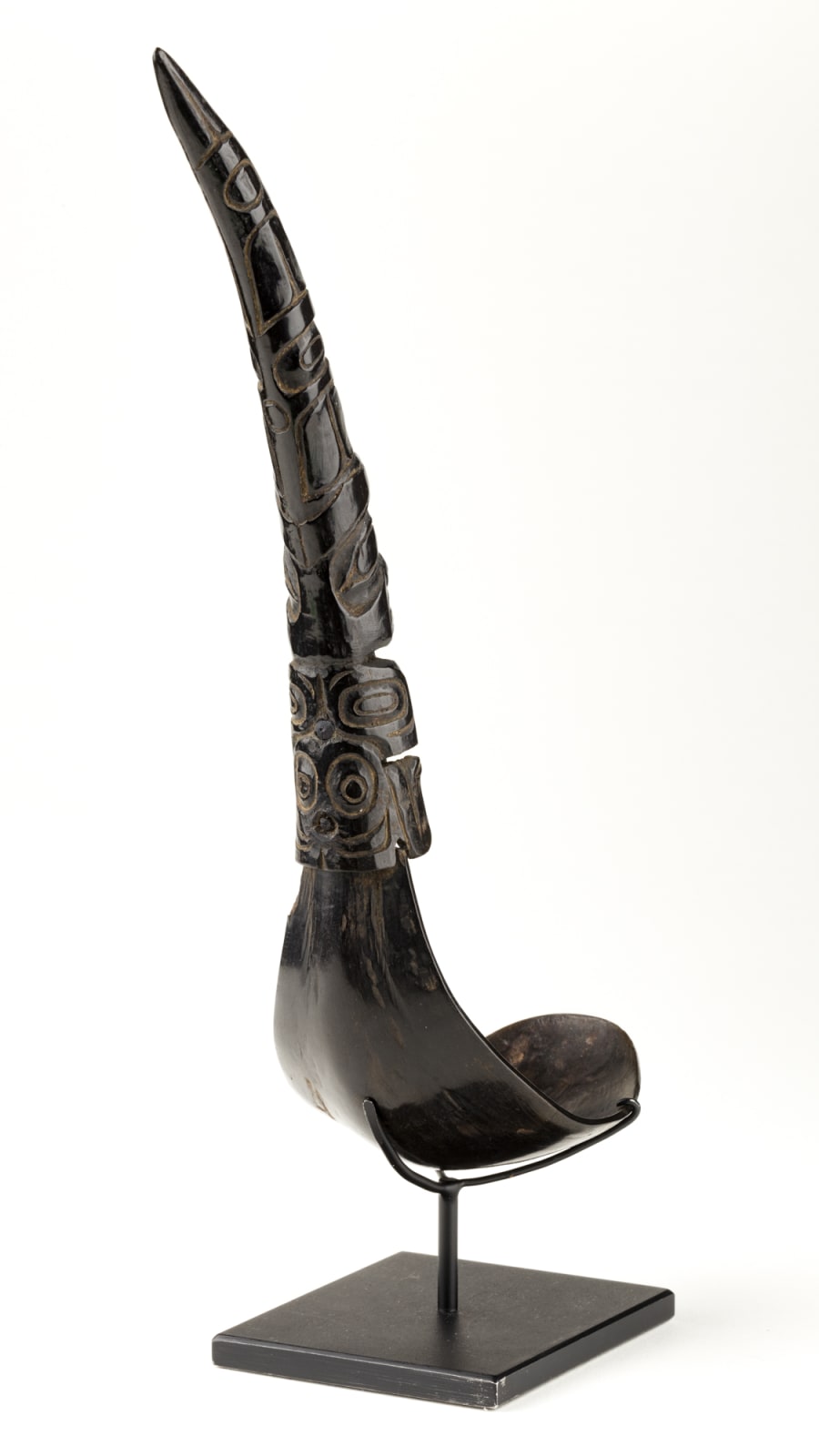-
Artworks
UNIDENTIFIED ARTIST, HAIDA
Feast Spoon with Totemic Carved Handle, 19th centurygoat horn and metal rivets, 8.5 x 2.5 x 3 in (21.6 x 6.3 x 7.6 cm) / 10.25 x 2.5 x 3 in (26 x 6.3 x 7.6 cm);
with a metal display stand;
unsigned.
LOT 43
ESTIMATE: $2,500 — $3,500
PRICE REALIZED: $3,840.00Further images
The joining of two mountain goat horns into a graceful spoon with a sculpted handle is one of the great technical accomplishments of northern Northwest Coast artists. Other Native groups...The joining of two mountain goat horns into a graceful spoon with a sculpted handle is one of the great technical accomplishments of northern Northwest Coast artists. Other Native groups have a history of making serviceable spoons and ladles from sheep or buffalo horn, but those do not approach the traditional Northwest Coast versions for elegance and beauty.
One horn is cut open on the inside curve, and the edges are shaped so that when boiled and softened, the horn can be opened out to be three times as wide as the original horn, and the tip rises to give a graceful curve to the bowl of the spoon. The other horn maintains its original shape, and is carved in Haida totemic style. The tip of the bowl horn is fitted into the hollow of the handle horn and fastened in place with metal rivets.
The figure at the base of the handle is a bird, possibly a thunderbird, the recurved beak of which is minimally carved to fit within the confines of the horn. The wings are on each side, with legs and tiny feet below them. The thunderbird’s tail curves around the back of the handle. The tip of the bowl horn has been textured to appear as the breast of the thunderbird between the wings. Above the thunderbird, classic formlines embellish the handle nearly to the tip. The genius of this design was perfected generations ago, and spoons like this once were kept in special boxes or baskets for use by families among the Haida and other northern Northwest Coast peoples.
Steven C. Brown
Provenance
Private Collection, Montreal.
Join our mailing list
* denotes required fields
We will process the personal data you have supplied in accordance with our privacy policy (available on request). You can unsubscribe or change your preferences at any time by clicking the link in our emails.












